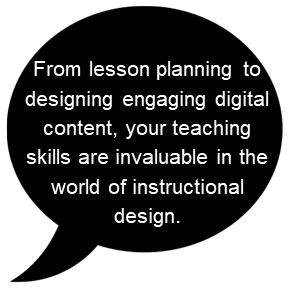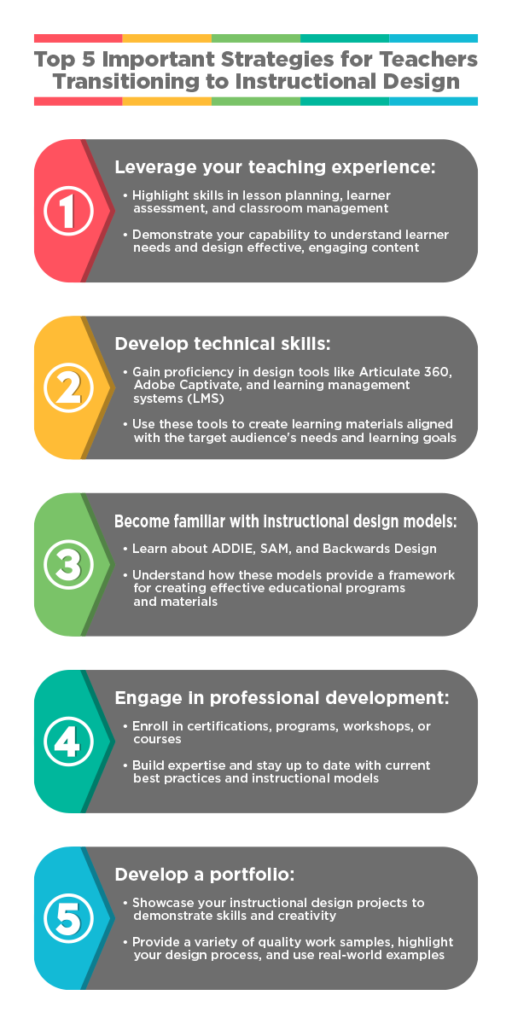Authors: Mackenzie Hill, M.A., University of Central Florida; Dr. Ashley Salter, University of Central Florida
Editor: Dr. Denise Lowe, University of Central Florida
Dear ADDIE,
I am a K-12 teacher looking to transition into an instructional design role. What steps should I take to make this career change, and what resources and best practices can help get me started?
Sincerely,
Ready for a Change
Dear Ready for a Change,
You’re in good company—many educators are excited to move from K-12 teaching to instructional design! It’s a pretty popular career move, and for good reason! With the rise of online and blended learning, many essential skills overlap, and there are way more opportunities for career growth and flexible remote/hybrid work setups. In fact, according to a 2020 article by the Association for Talent Development (ATD), teachers are jumping into instructional design roles more and more, mainly because there’s such a high demand for effective digital learning and better career opportunities (Slade, 2020). Don’t get me wrong, this transition isn’t a walk in the park, but the rewards of this career change have convinced many to take on the challenge and make the switch successfully.

Your teaching experience is going to be a huge asset in this transition. Don’t be afraid to showcase your skills in lesson planning, assessing learners, and managing a classroom. To nail this transition, familiarize yourself with instructional design models like ADDIE, SAM, and Backwards Design. They’ll give you a solid framework to work with. Oh, and don’t forget about technical skills! Brush up on design tools like Articulate 360, Adobe Captivate, and different learning management systems (LMS). Professional development is key, so look into certifications, programs, workshops, or courses to boost your skills. The University of Central Florida has a great Instructional Design Certificate Program, EdX offers an Instructional Design and Technology Micromasters Program, and Coursera’s Learning How to Learn is another fantastic resource. So, dive in and start exploring! With your teaching background and some new skills, you’ll be rocking the instructional design world in no time.
Want to know one of the biggest secrets to success in instructional design? Networking! Get out there and connect with other instructional designers by joining professional communities and attending conferences. Organizations like the Association for Talent Development (ATD), the International Society for Performance Improvement (ISPI), and the International Society for Technology in Education (ISTE) are goldmines for resources and opportunities to collaborate and share ideas with instructional designers from all over the world.
Oh, and don’t forget about your portfolio! Craft a showcase of your instructional design projects highlighting your skills and creativity. Make sure to follow best practices, such as including a variety of high-quality work samples, emphasizing your design process, and using real-world examples that show off your ability to tackle instructional challenges and create awesome learning experiences. A well-crafted portfolio is your ticket to9+ impressing potential employers and landing your dream job in instructional design!

By prioritizing these five strategies, you’ll be well on your way to successfully transitioning into an instructional design career. Leveraging your existing skills, developing new technical abilities, understanding instructional design principles, continuing professional growth, and showcasing your work to potential employers are the key aspects to focus on as you make this exciting career change.
References
Slade, S. (2020). From Teacher to Instructional Designer: What You Need to Know. Association for Talent Development. https://www.td.org/insights/from-teacher-to-instructional-designer-what-you-need-to-know
